One of the displays in the San Bernardino County Museum in Redlands, California, is entitled Sacred Earth and subtitled Understanding our past and honoring cultures that thrive today. Shown below are some artifacts associated with historic Southern California Indian cultures.
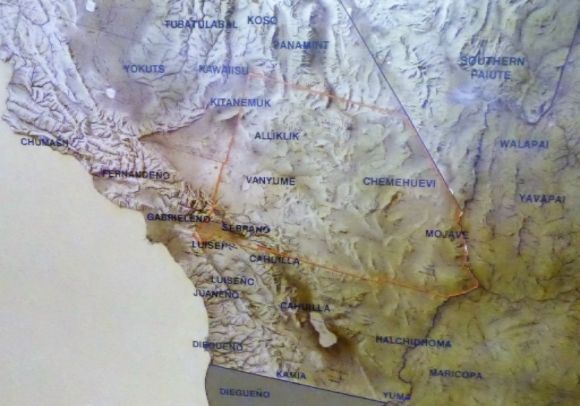 The map above shows the location of the historic tribes of Southern California.
The map above shows the location of the historic tribes of Southern California.
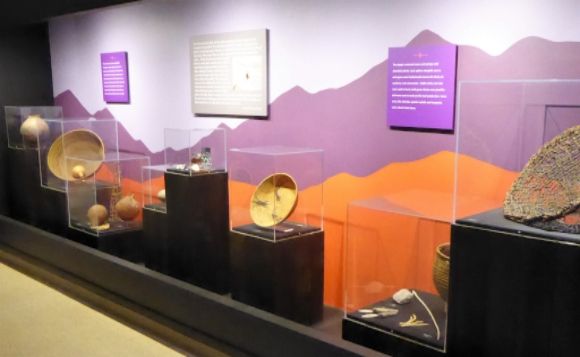
According to the Museum display:
“The desert contained oases and springs with abundant plants. Cacti, palms, mesquite, yucca, and agave were fundamental sources for food, art, medicine, and ceremonies. Rabbit sticks and nets were used to hunt small game. Rocks were plentiful and were used as tools for tool production. Some rocks, like obsidian, quartz crystals, and turquoise, were valued trade items.”
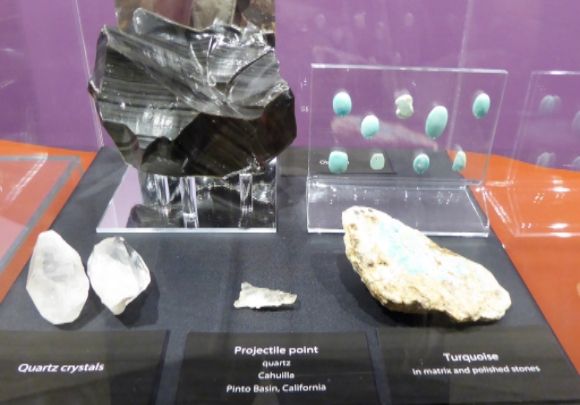 Shown above are some of the important rocks, including obsidian (the black stone in back).
Shown above are some of the important rocks, including obsidian (the black stone in back).
According to the Museum display:
“There are many rivers, springs, and wetlands throughout our region. People who lived close to larger rivers, like the Colorado, could irrigate nearby land, allowing them to stay in one place longer and take advantage of a more stable ecology. Thus, more pottery vessels and larger grain baskets could be used for storage. These baskets were made out of juncus, sedge, and tule, which thrive in wetlands. Nets and traps were used to catch fish and other river wildlife.”
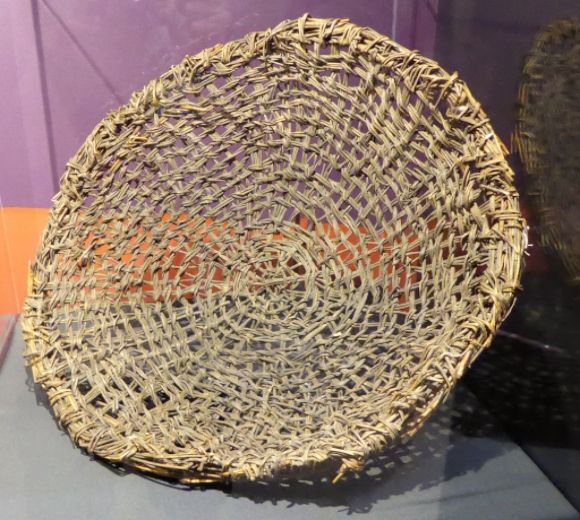 Shown above is an Ipai winnowing tray.
Shown above is an Ipai winnowing tray.
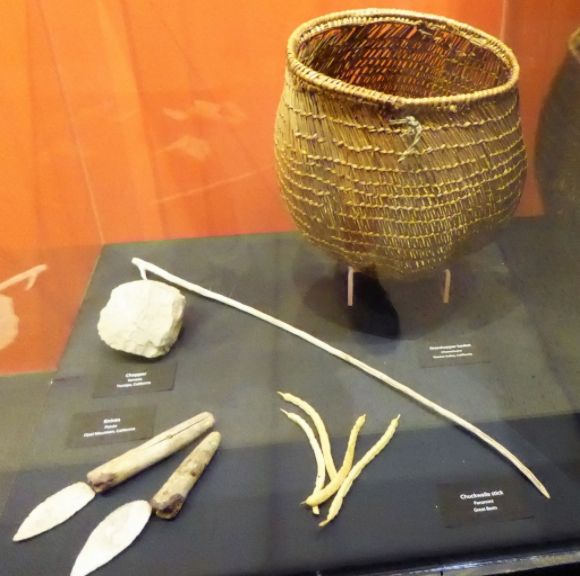 The basket shown at the back of this display is a Chemehuevi grasshopper basket.
The basket shown at the back of this display is a Chemehuevi grasshopper basket.
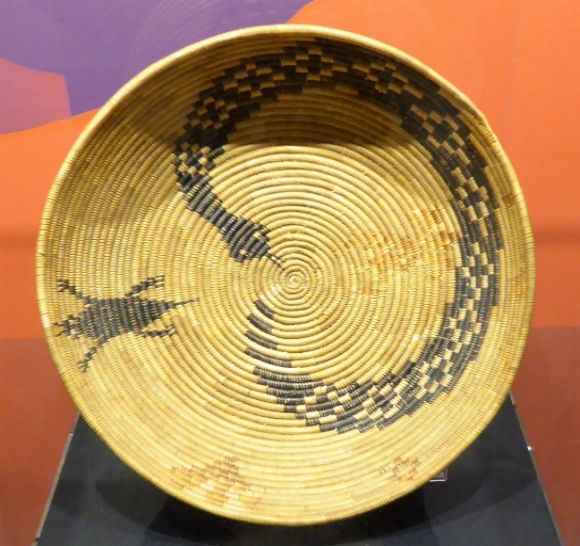 Shown above is a Serrano basket made by Jesusa Manuel.
Shown above is a Serrano basket made by Jesusa Manuel.
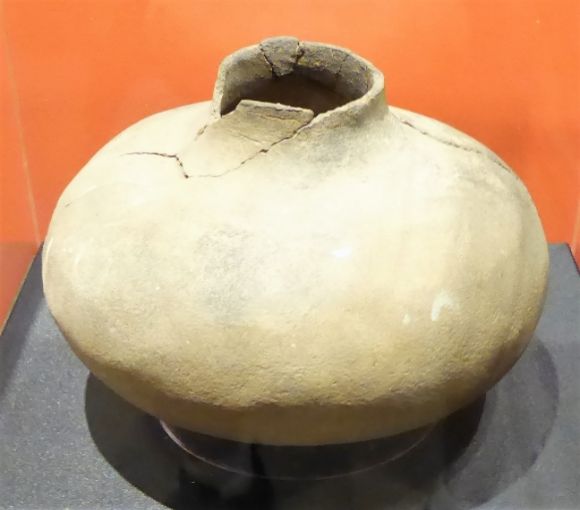 Shown above is a Kawaisu seed storage pot.
Shown above is a Kawaisu seed storage pot.
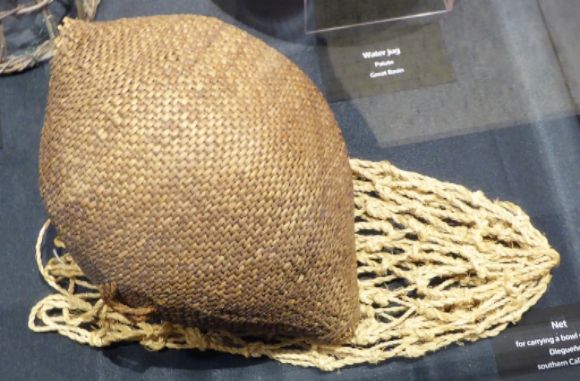 Shown above is a Paiute seed storage basket and a Diegueño net used for carrying a bowl or basket.
Shown above is a Paiute seed storage basket and a Diegueño net used for carrying a bowl or basket.
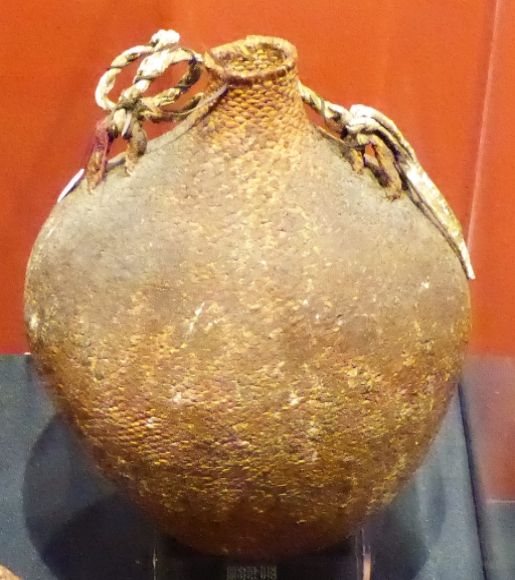 Shown above is a Paiute water jug.
Shown above is a Paiute water jug.
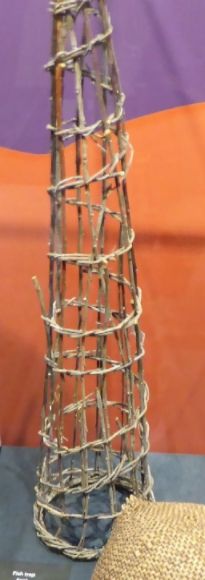 Shown above is a Karok fish trap.
Shown above is a Karok fish trap.
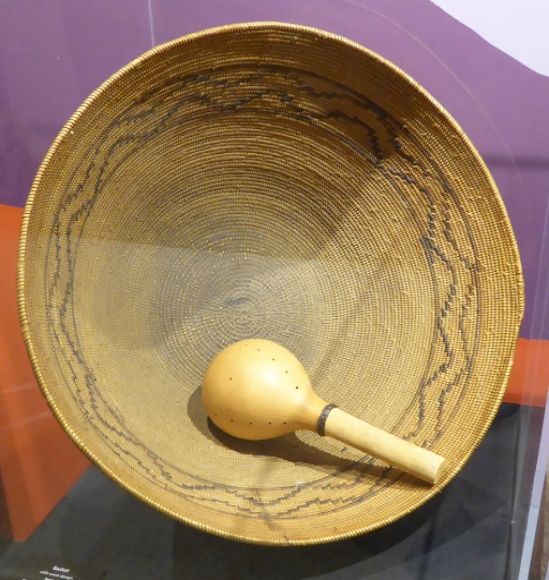 Shown above is a Mojave rattle and a Serrano basket.
Shown above is a Mojave rattle and a Serrano basket.
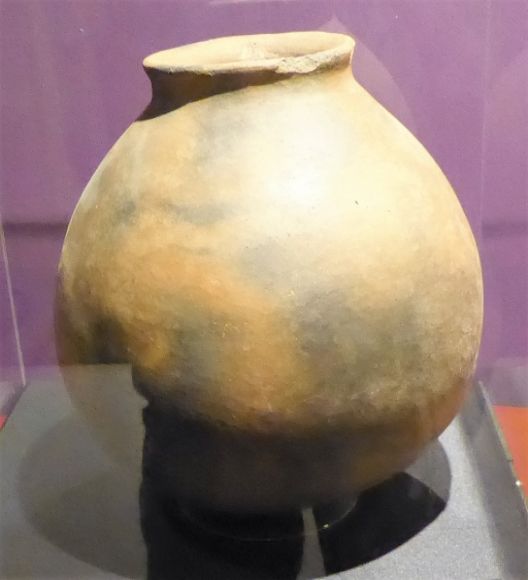 Shown above is a Chemehuevi olla.
Shown above is a Chemehuevi olla.
Regarding Chemehuevi pottery, Ronald Miller and Peggy Jeanne Miller, their book The Chemehuevi Indians of Southern California, report:
“Although the Chemehuevi sometimes baked pots, they were primarily basket-makers and not potters.”
In his 1925 book Handbook of the Indians of California, A.L. Kroeber puts it this way:
“…the Chemehuevi must in justice be classed as a tribe that made baskets and not pottery.”


